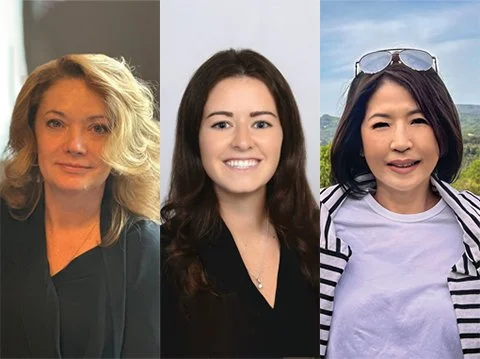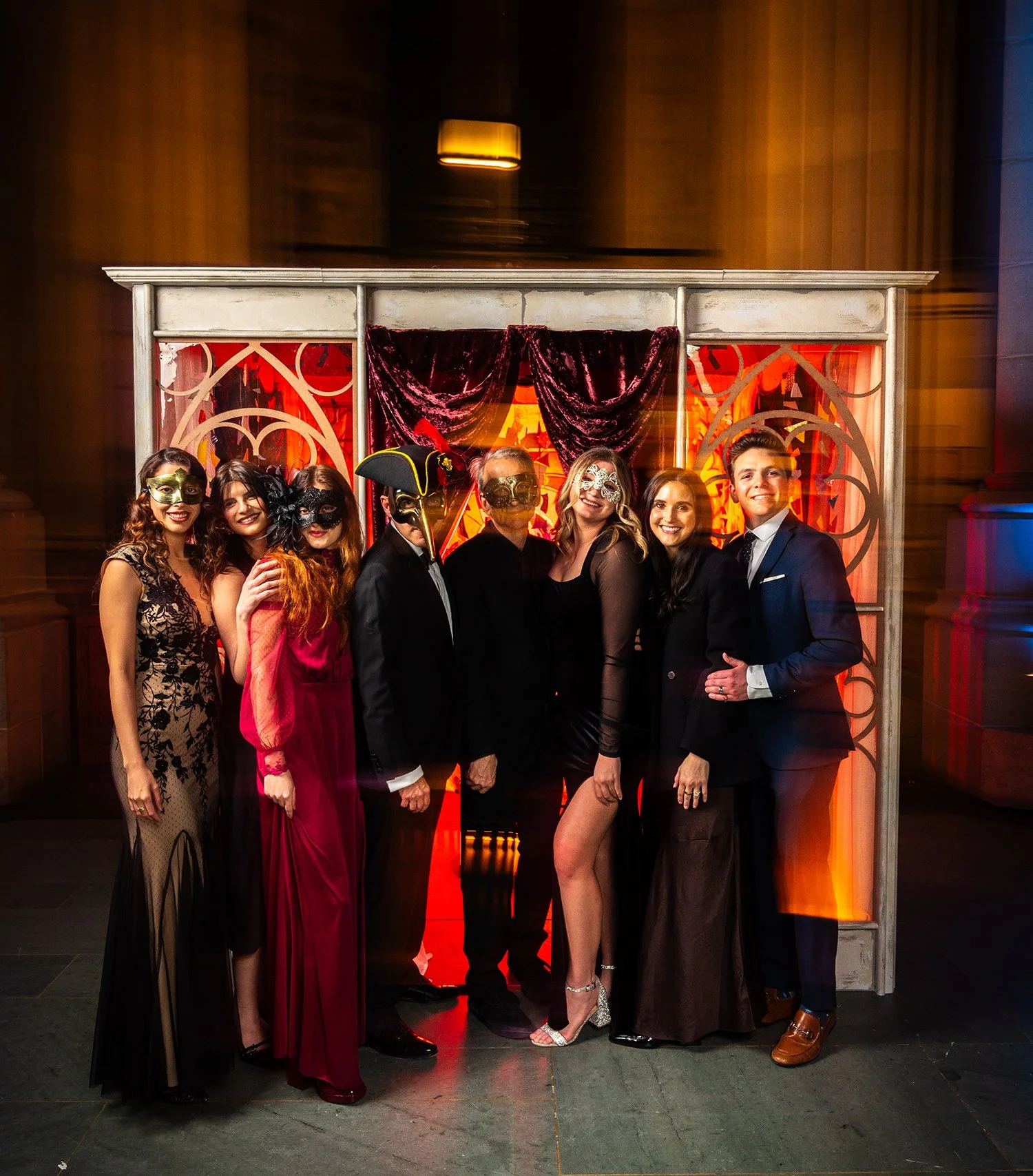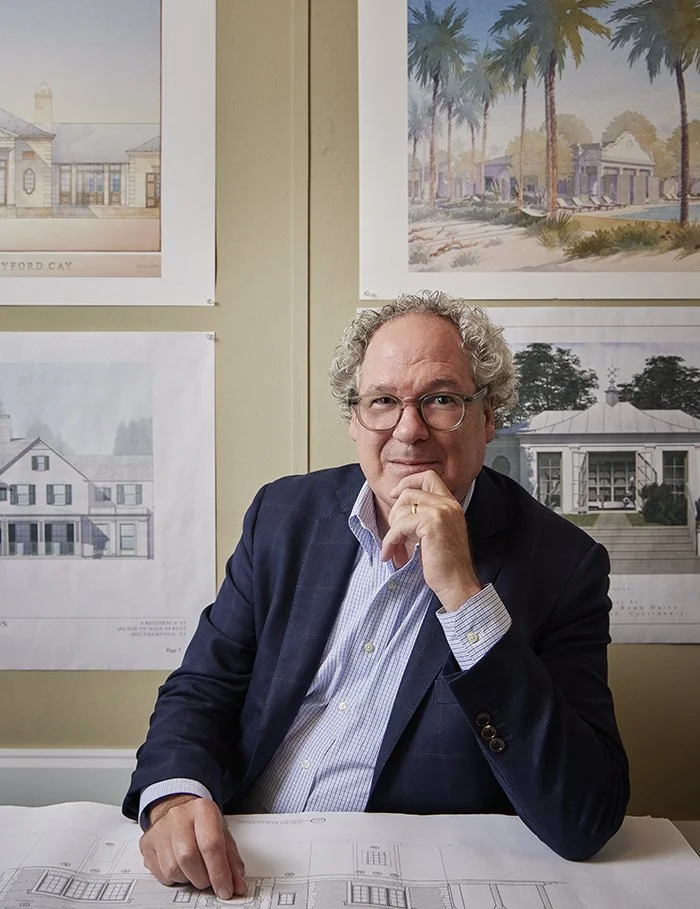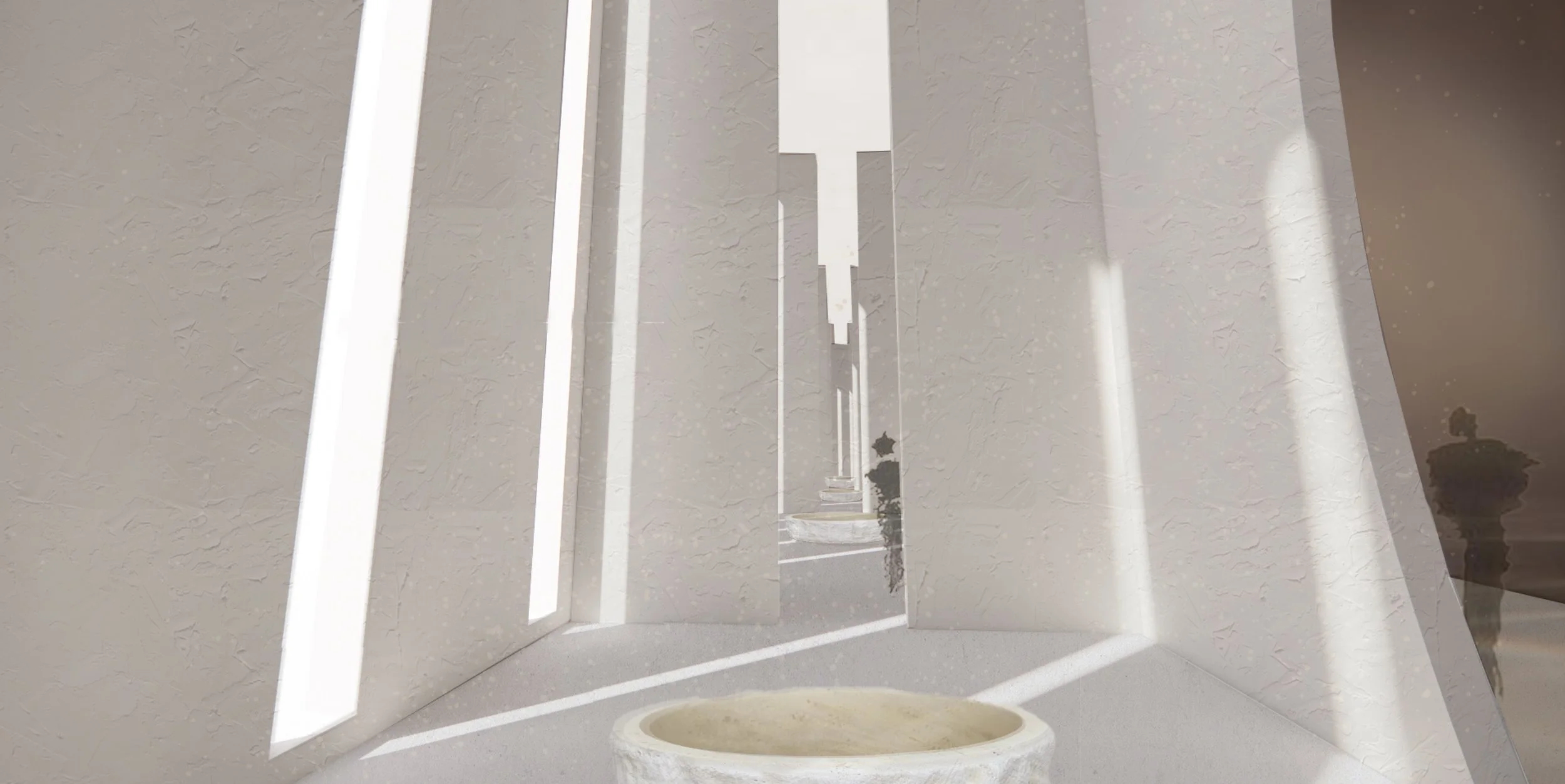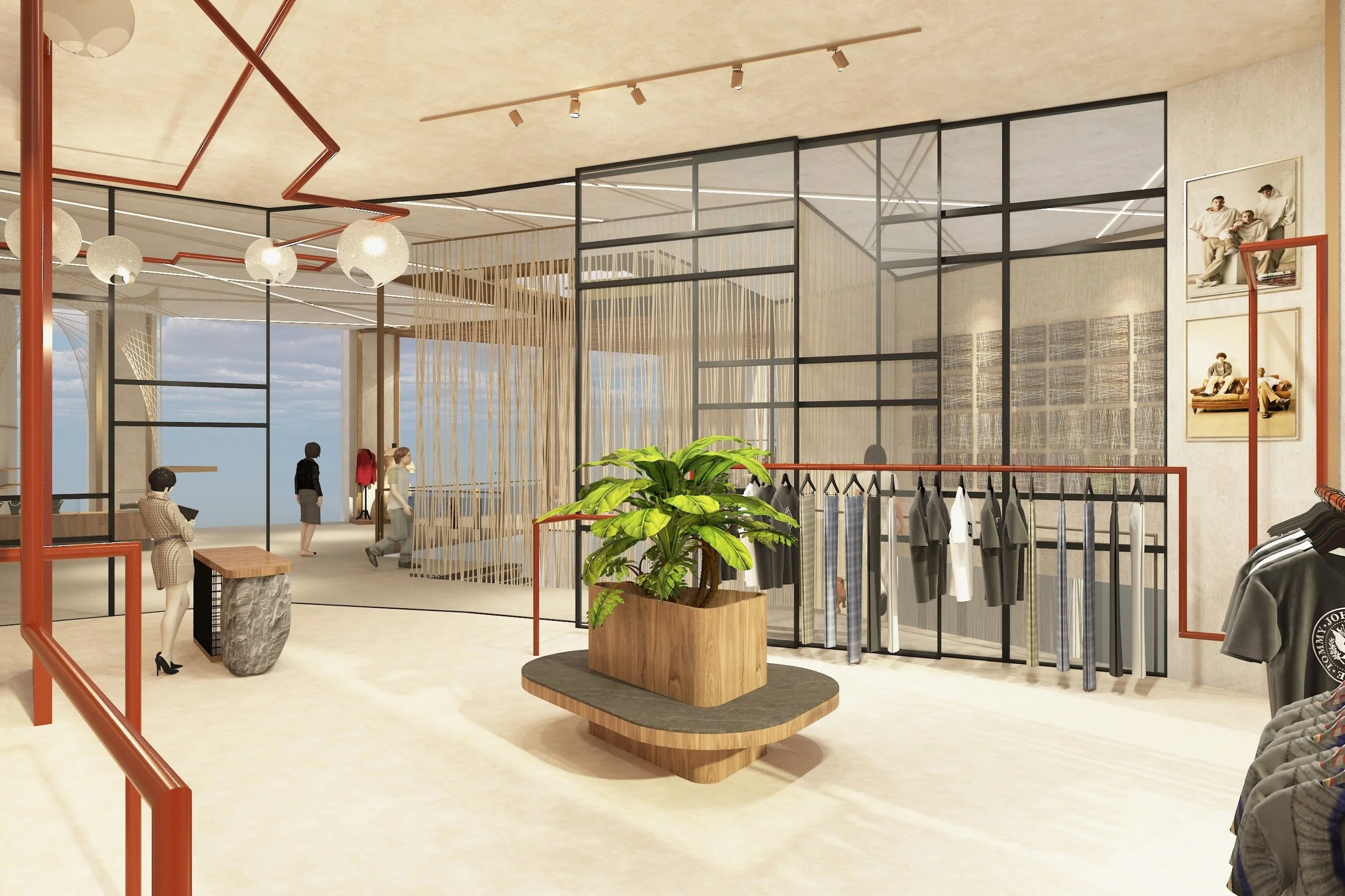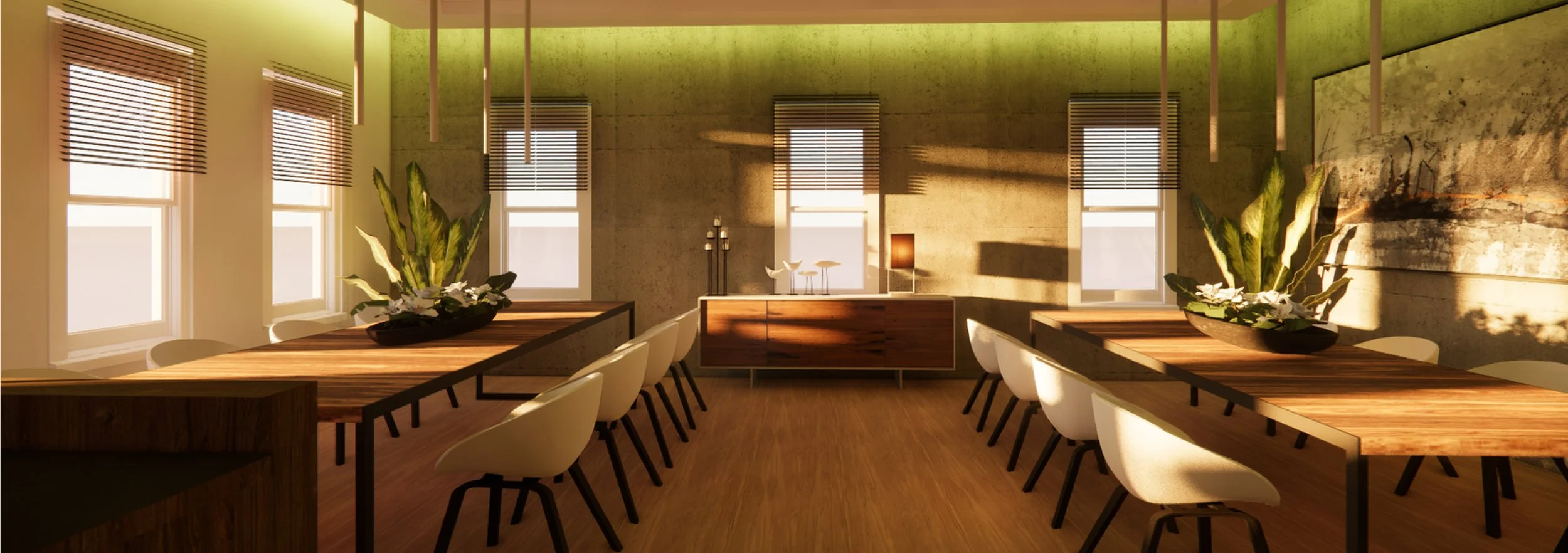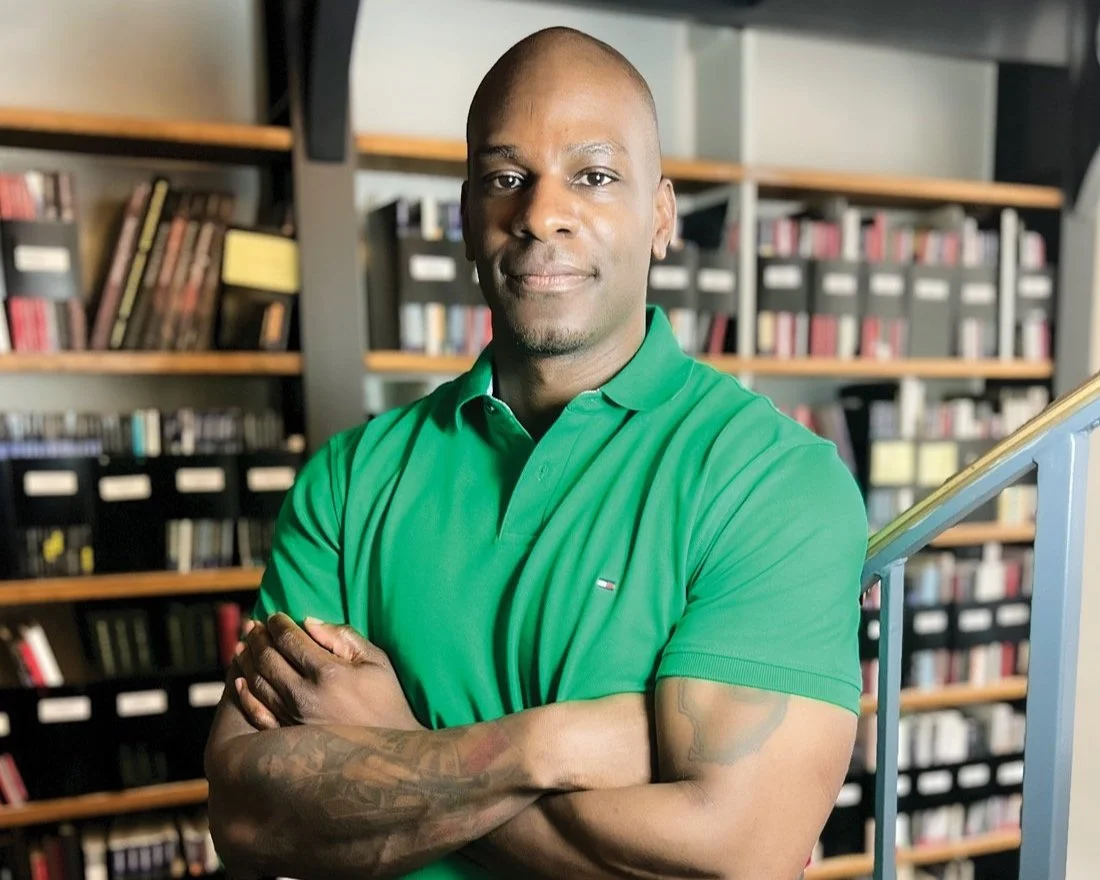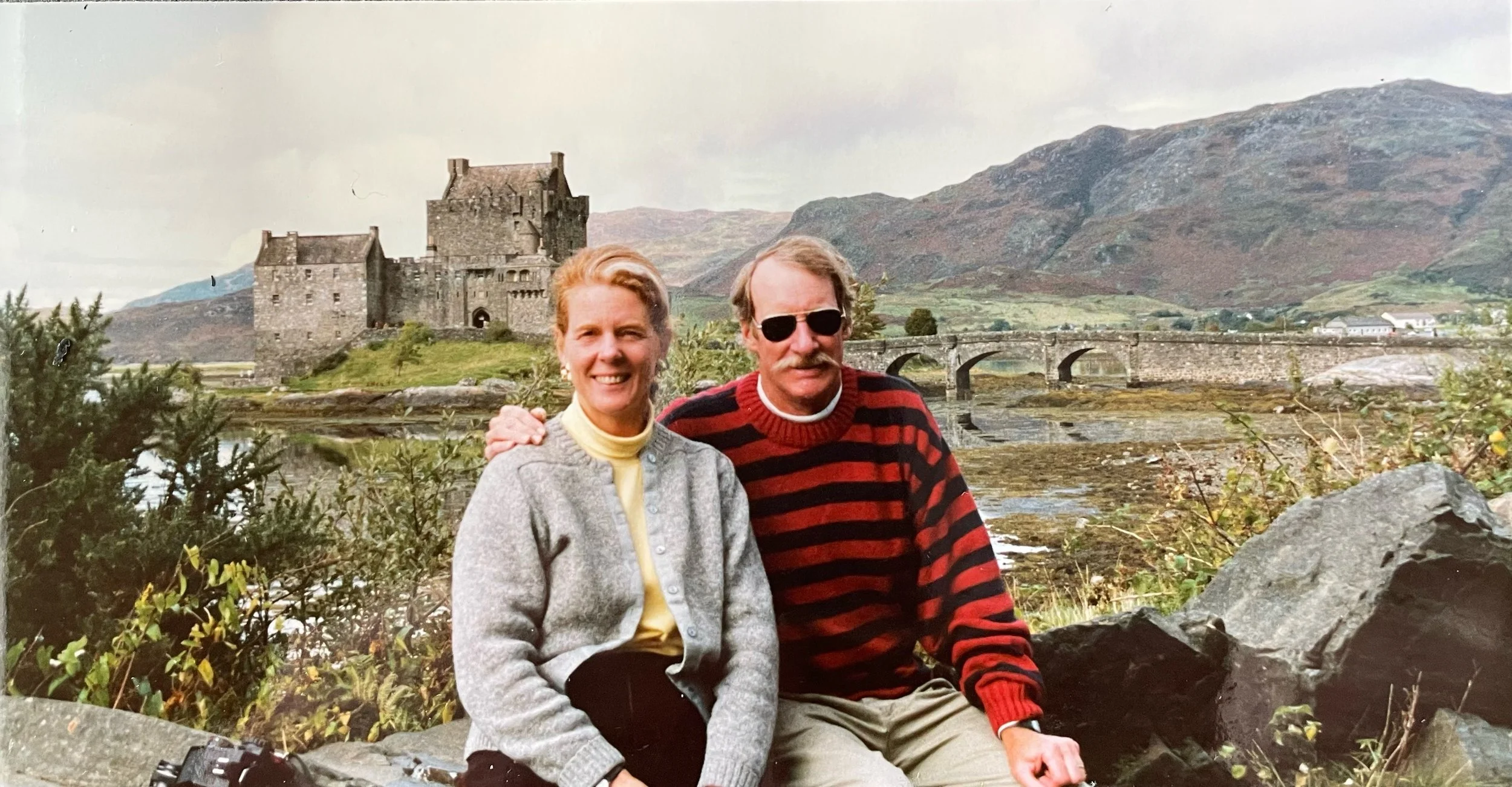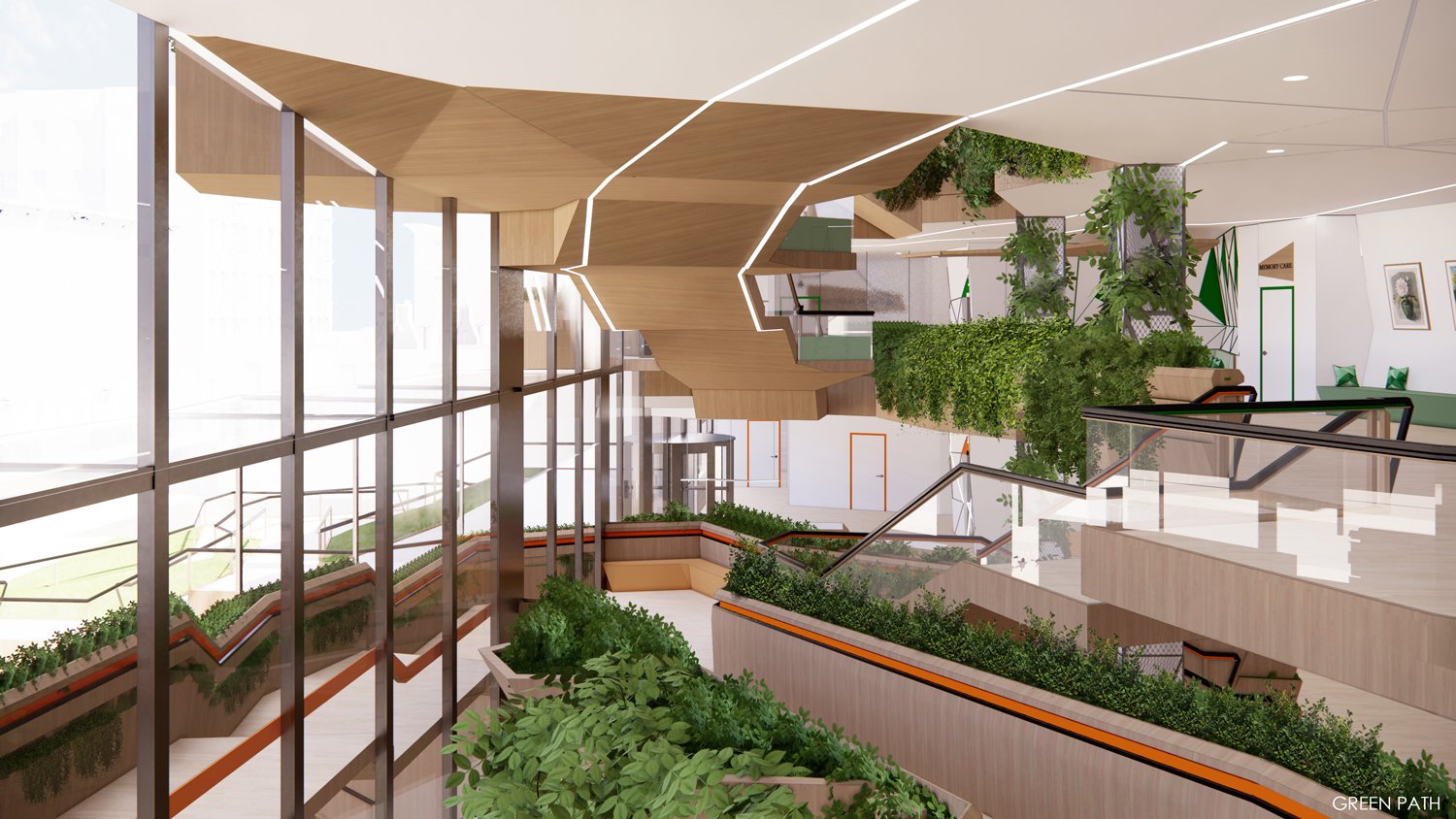5 Transformative Internships
Summers of Experience Teach Students About Interior Design & Themselves
NYSID students are landing life-changing internships at prestigious firms. This is particularly true of second-year MFA-1 students, who have mature portfolios to present during the interview process. Five MFA-1 students talk about what they learned during their summers at work, how they got their internships, and NYSID’s support of learning through experience.
The MFA-1 program used to go straight through the summer. It was an intense, immersive program, and the leaders of the College soon figured out that students needed a change of scenery in the summer and some time to experience design out in the world. Ellen Fisher, vice president for academic affairs and dean, and Barbara Lowenthal, associate dean, decided to create a dedicated space for real-world experience in the MFA-1 curriculum. So the concept of the “experiential summer” was born.
MFA-1 students get to design their own summer learning experience, which can be independent study, a deep dive into graphic communications, service learning, or an internship. Says Barbara Lowenthal, “Students are especially interested in internships where there are lessons about design parameters, client relations, collaboration, and more—things that students can only learn from real work experience. But it’s not enough to just have the experience, we also expect the students to reflect on it.”
For this reason, Fisher and Lowenthal developed an online course to support these summer experiences. MFA-1 students in their first summer share their experiences online with their classmates, describing what’s involved in an internship or other learning experience. In their second summer, students in Experiential Learning II get a head start researching their final capstone project and are encouraged to integrate their summer experiences into their research.
The students profiled here are making their own luck, mining the resources the College has to offer to find opportunities. NYSID’s alumni often have a role in helping our students get a foot in the door as interns. It will come as no surprise that personal connections are the key to getting these outstanding internships.
René Johnsen ’20
INTERNSHIP: Deborah Berke Partners
When René Johnsen sat down with Nansi Barrie, NYSID’s career services and internship coordinator, to figure out what she wanted in an internship during her final experiential summer with NYSID, she decided she wanted exposure to both residential design and commercial design, and, more specifically, a firm with an extreme focus on the craft and detail of how things are made. She had done her first summer internship at a residential firm, Jan Showers in Texas. Barrie suggested Deborah Berke Partners, and Johnsen realized she already had two friends who interned at the firm, MFA-1 students Jonathan Ting and Sarah Stevens. Her classmates connected her to individuals within the firm. She interviewed and got the summer internship.
Among the qualities she loves about the firm are its identifiable aesthetic—what she calls “modernism that incorporates history”—and the emphasis it places on working with master artisans. She also has tremendous respect for Deborah Berke, the principal of the firm, who is the first woman to lead the Yale School of Architecture. The firm is small enough that Johnsen interacted with Berke. She says, “She forged a new standard for the female voice in the industry, yet she’s so humble. We have ‘Bar Cart Fridays,’ and one Friday she actually served the staff and interns a drink. That tells you something about the firm.”
For the first half of her internship, she worked in the institutional department of the firm, on projects for Ivy League schools. She worked on installation drawings and on budgets for these institutions. Johnsen says, “It’s a good experience to have to modify sourcing based on the budget.”
Later in the internship, she worked in the residential design department, and one of the many designers she worked for was alumna Kiki Dennis ’01 (AAS), a partner at the firm. In this department, Johnsen became the self-described “jack of all trades,” jumping into help on CAD work, InDesign presentations, Revit installation drawings, Photoshop presentations, and more. She says, “It’s awesome that we are learning Revit at NYSID. I knew as much Revit as some of the professionals and could actually share some helpful tricks of the trade. I felt prepared and useful.”
Johnsen has always been interested in residential design, and she thinks the most important thing you can take out of an internship is a virtual Rolodex of sources. She says, “Product sourcing and vendor connections are what help you succeed, beyond talent and technology.” She’s applying much of what she learned about sources to her thesis now, as she feels a clear vision of the vendors you will use influences the overarching concept. She says, “Having experiences in commercial and residential design showed me there is much overlap between the two. I want to create spaces that feel warm and personal. This internship opened my eyes up to all of the possibilities.”
“Having experiences in commercial and residential design showed me there is much overlap between the two. I want to create spaces that feel warm and personal. This internship opened my eyes up to all of the possibilities.”
Michelle Simms ’20
INTERNSHIP: Perkins Eastman
Sometimes in life, you don’t get exactly what you want, and that can be good for you. At least that’s Michelle Simms’ philosophy. Going into her second experiential learning summer at NYSID, Michelle Simms was focused on securing an internship with a health care studio at a large firm. She consulted with Nansi Barrie, NYSID’s career services and internship coordinator, and Barrie put her in touch with Christina Peters ’08 (BFA), an alumna who is a senior associate on the Senior Living Team at Perkins Eastman. Simms interviewed for the job in the health care studio with Peters, the principal of senior living and the principal of health care, and didn’t get it, but she left a strong impression. “I think she could tell I was hungry,” says Simms. Peters reached out to Simms and offered to informally mentor her. She gave Simms tips on her portfolio. A month later, a paid internship opened up in the workplace studio at Perkins Eastman, and Peters told Simms about it. Simms got the job! It was not exactly what she had envisioned for herself, but she liked the diversity of experience the firm had to offer, and she jumped on it. She says, “I thought of that saying, ‘Man plans, God laughs.’”
The internship in the workplace studio at Perkins Eastman turned out to be an incredible learning experience. Says Simms, “The workplace team is fastpaced: Projects are turned around in a year to two years, so you get to see a project from schematic design to contract administration. I got to jump into many stages of the design process. The jobs take you along with them.” She worked on schematic design development, specifically rendering in Revit, for the New York offices of a major bank, as well as a chain of private schools in China. One of the most challenging things she worked on was furniture scheduling. She actually tackled this task with the guidance of Amy Everard, a senior associate at the firm who, coincidentally, has just joined the NYSID faculty this year as a Contract II professor. Simms says. “The labeling for a whole building was difficult. It took a few iterations to get it right. The whole point is learning how to do things on a scale I’ve never done before.” Simms’ tenacity served her well: the firm invited her to keep working for them after the summer.
Simms feels the biggest lesson of her internship is collaboration. “I gained better organizational skills for project collaboration,” she says. “We don’t use shared Revit files at school, so I had to learn the proper etiquette for doing that from the team. It was great to produce designs based on established design concepts. We had deadlines we had to meet in order to be able to communicate our progress to the client. Sharing this responsibility with a group was an invaluable experience. I gained more confidence as a designer.”
“The workplace team is fastpaced: Projects are turned around in a year to two years, so you get to see a project from schematic design to contract administration. I got to jump into many stages of the design process.”
Ryan Pearsall ’20
INTERNSHIP: Gensler
Early last spring, a friend who worked at Gensler invited Ryan Pearsall to a photo shoot of the Campari headquarters she had worked on. Realizing he’d be able to see a one-of-a-kind workspace, Pearsall jumped at the opportunity. At this event, Pearsall met design directors and design leads, as well as some other people in Work 9 group, a studio at Gensler that specializes in designing and building workplaces for fast-growth tech companies. As he was introduced around and spoke about his experience in the industry, the designers from Work 9 encouraged him to apply for an internship. Pearsall says, “Gensler got something like 700 applicants for summer internships with only room for 40 interns, so you have a better chance of making it to the interview round if there is a personal recommendation from someone inside the firm.” Pearsall had the portfolio and interview skills to shine through the interview process, and he was hired for the paid internship.
As to why he selected Gensler, Pearsall says, “Big firms like Gensler expect a lot from you, but the real-life experience and on-site opportunities you’re given are unlike anything a different firm would offer, and these helped to drive my career forward like no other internship could.” Spending most of his time on two projects, Pearsall was able to become fully immersed in the day-to-day of these two sites. His work required a variety of skills, including construction administration: providing shop drawings, updates to floor and furniture plans, managing RFIs for custom millwork, and communicating with various vendors on a daily basis. The variety of work was great for growing his understanding of every stage in a project, Pearsall reports. His work for the design development stage included sending floor plans, finishes, and other drawings out to bid to contractors. “One thing that I really got exposure to was collaboration,” says Pearsall. “You end up learning a lot about communicating technical and architectural detail within a team. Your designs need to be clear and your callouts need to be concise.”
On top of the daily project work, the summer interns were given a special project in which teams of six were tasked with reimagining the headquarters of 826 Park Slope. The interns were given a real-life scenario to practice the various skills learned throughout the summer. Pearsall and his team presented their concept at both the midpoint of the internship and for a final concept design presentation (to which the client and the entire Gensler office were invited).
Perhaps the most salient thing Pearsall took from his most recent internship is direction. “The resources that are available at Gensler are unparalleled,” he says. “The materials library is vast. There are learning opportunities between different disciplines and vendor offerings that can really help you develop professionally.”
“Big firms like Gensler expect a lot from you, but the real-life experience and on-site opportunities you’re given are unlike anything a different firm would offer, and these helped to drive my career forward like no other internship could.”
Jonathan Ting ’20
INTERNSHIP: Kengo Kuma and Associates
Last year, when his MFA-1 classmate Mona Nahm mentioned that her husband had worked at Kengo Kuma in Tokyo and had connections there, Jonathan Ting grew excited, because he’s a huge fan of Japanese design and, more specifically, the respect for nature inherent in legendary architect Kengo Kuma’s buildings and interiors. Nahm put him in touch with the human resources department at Kengo Kuma, and he eventually landed an internship. Says Ting, “There is this real culture of helping each other with school and career in NYSID’s MFA-1 program.”
More than 20 percent of NYSID students are international students, so the summers of experience give them a chance to go home to see their families as well as make career connections in their home countries. Jonathan Ting is an American of Taiwanese descent, but family was one reason he wound up in Japan last summer. His grandmother had moved to Japan, and he valued the rare opportunity to spend time with her.
The firm had hired an interior designer eight months earlier, and Ting was hired to work with her. He and his colleague were two interior designers working in a studio primarily made up of architects. He was the only interior design intern, and perhaps the first at the company. He says, “It was interesting to see how the architects respected the interior designer. She consulted with the interior architects. Architects think differently, and her perspective was valued and different. Interior designers perhaps focus more on livability.”
He helped with the interior design of a hotel project, assisting in the design document phase, doing sections for hotel rooms, dimensions for presentations, the architecture of interiors, banquet seating, and more. For a large hospitality project that will be built in Saudi Arabia, he did conceptual spatial planning, concept boards, floor plans, and 3D modeling, and the selection of furniture and materials. Ting says, “The importance of nature to the firm helped me see how elements of nature can be incorporated into design. It’s an aesthetic influence. It’s not always the logical part of your brain that takes in information.” He did case studies in Japan for Experiential Learning, and they have influenced the direction of his thesis.
He explains that the specific parameters from the client really helped him develop as a designer. “It was similar to what we are doing at school, but it’s more specific,” Ting says. “You have to have an exact number of seats in a room. The restrictions helped me grow.”
“The importance of nature to the firm helped me see how elements of nature can be incorporated into design. It’s an aesthetic influence. It’s not always the logical part of your brain that takes in information.”
Mona Nahm ’20
INTERNSHIPS: Robert A.M. Stern Architects and AvroKO
Mona Nahm heard about the Robert A.M. Stern Architects (RAMSA) summer internship from Nansi Barrie, and decided she really wanted it. The internship is coveted because it’s a robust 10-week program that emphasizes the education of interns. Barrie alerted Nahm as soon as RAMSA posted its summer internship opportunity, and Nahm applied that same day. Then for weeks, there was no word. Nahm began to worry. She reached out to Barrie, who sent an email to Lawrence Chabra ’09 (BFA), a NYSID alumnus who is the Interiors Studio Director and Associate at RAMSA. Nahm got a call from human resources at RAMSA a few days later. Nahm went in to interview, and her interviewer was Chabra. Perhaps it was a stroke of luck that Chabra was going in to critique student work in Willam Engel’s NYSID class that very evening, right after Nahm’s interview. She says, “I don’t know if it was my portfolio or the fact that my teacher Bill Engel put in a good word for me, but I got the job. It wasn’t planned, but it all came together.”
Nahm landed in the Interiors Studio at RAMSA. She was one of only two interior design interns in the whole company, which employs around 280 people. The other interior design intern, Miloni Dinani ’20 (MFA-2), was also a NYSID student. According to Nahm, at RAMSA, the Interiors Studio deals very much “in materiality” and collaborates with different kinds of architecture studios. She worked mostly on residential projects, especially on FF&Es (furniture, fixtures, and equipment). Nahm says the RAMSA internship is extraordinary because “they have such a commitment to education. They know you might leave, but it’s their investment back into the educational system behind design and architecture.” For her twice-a-week lunch-and-learns, studio heads came in to present to the interns on a particular area of expertise. There is a landscape architecture studio at RAMSA, and Nahm was struck by a presentation by this group, which examined a case in which they took nine years to execute a design in order to protect the habitat of an endangered species. There is also a travel scholarship for employees, and as a result one of the partners gave a presentation on the Scottish designer and architect Robert Adam, which blew Nahm away.
Nahm could not have loved this RAMSA internship more, but when she got a formal offer to stay on throughout the year, she turned it down. She says, “As a student, you should try hard to expose yourself to different kinds of design internships over the course of your time at NYSID.” She felt that she had a hole in her professional exposure when it came to hospitality design, so when she got an opportunity to do a fall internship at the cutting-edge hospitality firm AvroKO, she took it. She says, “I asked myself: What do I have no experience in? Internships are the one time in our work lives when we get to experiment and discover what brings us joy.”
“Internships are the one time in our work lives when we get to experiment and discover what brings us joy.”










